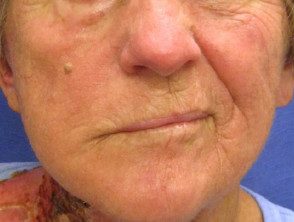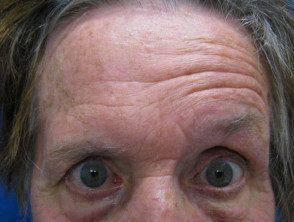What is Ramsay Hunt? syndrome?
Ramsay Hunt syndrome is rare peripheral facial neuropathy. It is a type of shingles due to the reactivation of the varicella zoster virus (VZV) in the geniculate. ganglion of the VII cranial nerve, which supplies the facial nerve.
- Ramsay Hunt syndrome is characterized by unilateral facial weakness and painful blisters, either in the ear canal on the same side as the facial paralysis or inside the mouth.
- Sometimes cranial nerve VIII involvement produces auditory (hearing) and/or vestibular (dizziness) symptoms. Infection can also extend to cranial nerves III, IV, V, VI, IX, X, XI and XII.
- Blisters may be absent in some patients, in which case the infection is known as zoster sine herpete.
Ramsay Hunt syndrome is also known as herpes zoster oticus, geniculate ganglionitis, Ramsay Hunt disease, and Hunt syndrome. The name was coined by neurologist James Ramsay Hunt in 1907.
Who gets Ramsay Hunt syndrome?
Ramsay Hunt syndrome occurs in people with a history of chickenpox (chickenpox).
- Ramsay Hunt syndrome is rare, it has a incidence of approximately 5 per 100,000 inhabitants.
- It is slightly more common in women than in men.
- Ramsay Hunt syndrome is mainly seen in adults, particularly people over 60 years of age, but is rarely seen in children.
- The 12% of peripheral facial nerve palsies are attributable to Ramsay Hunt syndrome.
- Ramsay Hunt syndrome is the second most common cause of nontraumatic peripheral facial paralysis.
What causes Ramsay Hunt syndrome?
After primary VZV infection (i.e. chickenpox), there is a latent period where VZV remains inactive in the neurons of the cranial nerves, the dorsal root ganglion and autonomic ganglia. Reactivation of VZV in the geniculate ganglion of the VII cranial nerve is what leads to the syndrome. VZV can also spread axons from other cranial nerves that share a blood supply with the geniculate ganglion.
VZV reactivation is most likely for:
- Individuals with immunodeficiency, such as infection with human immunodeficiency virus (HIV) or malignancy
- People on immunosuppressive treatment, corticosteroids, chemotherapyor radiotherapy
- Individuals experiencing infection or physical or emotional stress.
What are the clinical characteristics of Ramsay Hunt syndrome?
The hallmark features of Ramsay Hunt syndrome are unilateral facial nerve paralysis and a painful vesicular eruption in the ear and the mucous membrane of the oropharynx or palate Around 20% patients develop facial nerve paralysis several days before the blisters appear. About 10% of Ramsay Hunt syndrome patients do not develop blisters.
Other symptoms of Ramsay Hunt syndrome may include:
- Flu-like symptoms, like a fever and headache, for 3 to 7 days before the rash appears
- Feeling of pain or pain in the ear.
- Macules, papulesand uniting vesicles in painful places, which are then broken with crust
- Loss of the sensation of taste in the previous two thirds of the tongue
- Dry eyes and dry mouth
- Tinnitus, hearing loss or hyperacusis (increased sensitivity to sound), Vertigo, nausea and vomiting
- Symptoms due to dysfunction of other cranial nerves.
Ramsay Hunt syndrome

Herpes infection

Facial nerve paralysis

Facial nerve paralysis
How is Ramsay Hunt syndrome diagnosed?
The diagnosis of Ramsay Hunt syndrome is usually made clinically. The diagnosis can be confirmed by testing with a VZV Polymerase chain reaction rehearsal (using ear exudate) This test is particularly useful in distinguishing the zoster sine herpete variation of Ramsay Hunt syndrome from Bell's palsy (idiopathic acute facial nerve paralysis).
Magnetic resonance imaging (Magnetic resonance) can be carried out if there are polycranial neurological symptoms
What is the treatment for Ramsay Hunt syndrome?
Complete recovery is more likely if antiviral Treatment is started within 72 hours of the onset of symptoms. Treatment options for Ramsay Hunt syndrome are:
-
Acyclovir 800 mg orally five times a day for 7 days.
- Valacyclovir 1 g three times a day for 7 days.
- Famciclovir 500 mg three times a day for 7 days.
- Combination therapy of antiviral treatment and prednisone (60 mg orally daily for 5 days).
Symptomatic treatment during acute Ramsay Hunt syndrome may include:
- Systemic corticosteroids
- Opioid analgesics.
- Anticonvulsants, such as gabapentin and pregabalin.
- Ice packs on blisters
- An eye patch if you can't close one eye
- Artificial tears and lubricating ointments to combat dry eyes.
- Transcutaneous electrical nerve stimulation (TENS) and vibration
- Warm current solution of aluminum sulphate.
Topical capsaicin can be used for postherpetic neuralgia but it is not well tolerated on facial skin.
What is the result of Ramsay Hunt syndrome?
Ramsay Hunt syndrome is associated with poor forecast than Bell's palsy; That is, complete recovery is less likely, particularly if antiviral treatment is not started within 72 hours of symptom onset.
Brachmann's house Scale, which correlates with the degree of facial nerve dysfunction, can be used as forecast tool.
Poor prognostic factors include:
- Mellitus diabetes
- Old age (> 60)
- Hypertension
- Vertigo.
Complications may include:
- Permanent facial paralysis
- Hearing loss
- Synkinesis (unwanted facial movements linked to deliberate movements)
- Polycranial neuropathy
- Myelitisinflammation of the spine cable)
-
Postherpetic neuralgia.
